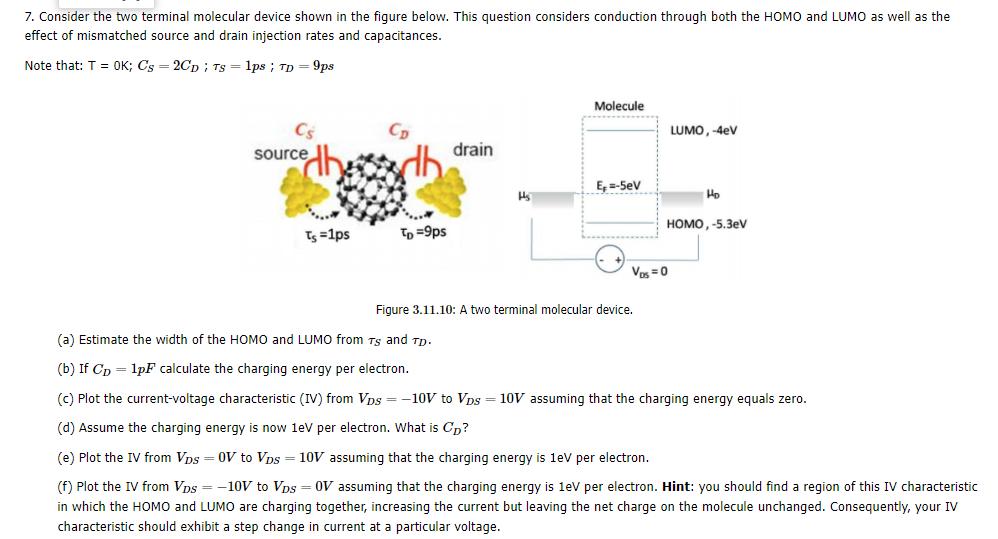Answered step by step
Verified Expert Solution
Question
1 Approved Answer
7. Consider the two terminal molecular device shown in the figure below. This question considers conduction through both the HOMO and LUMO as well

7. Consider the two terminal molecular device shown in the figure below. This question considers conduction through both the HOMO and LUMO as well as the effect of mismatched source and drain injection rates and capacitances. Note that: T = OK; Cs 2CD; TS 1ps; TD=9ps = Cs source Molecule LUMO, -4eV Cp drain E=-5eV HOMO, -5.3eV T=1ps T=9ps VDs=0 Figure 3.11.10: A two terminal molecular device. (a) Estimate the width of the HOMO and LUMO from TS and TD. (b) If CD1pF calculate the charging energy per electron. (c) Plot the current-voltage characteristic (IV) from VDs = -10V to VDs = 10V assuming that the charging energy equals zero. (d) Assume the charging energy is now 1eV per electron. What is CD? (e) Plot the IV from VDs = 0V to VDs = 10V assuming that the charging energy is 1eV per electron. (f) Plot the IV from VDs = -10V to VDs = 0V assuming that the charging energy is 1eV per electron. Hint: you should find a region of this IV characteristic in which the HOMO and LUMO are charging together, increasing the current but leaving the net charge on the molecule unchanged. Consequently, your IV characteristic should exhibit a step change in current at a particular voltage.
Step by Step Solution
There are 3 Steps involved in it
Step: 1
Part a Estimating the width of the HOMO and LUMO Given TS 1 ps TD 9 ps Using the uncertainty princip...
Get Instant Access to Expert-Tailored Solutions
See step-by-step solutions with expert insights and AI powered tools for academic success
Step: 2

Step: 3

Ace Your Homework with AI
Get the answers you need in no time with our AI-driven, step-by-step assistance
Get Started


